Last Updated on November 28, 2024 by teamobn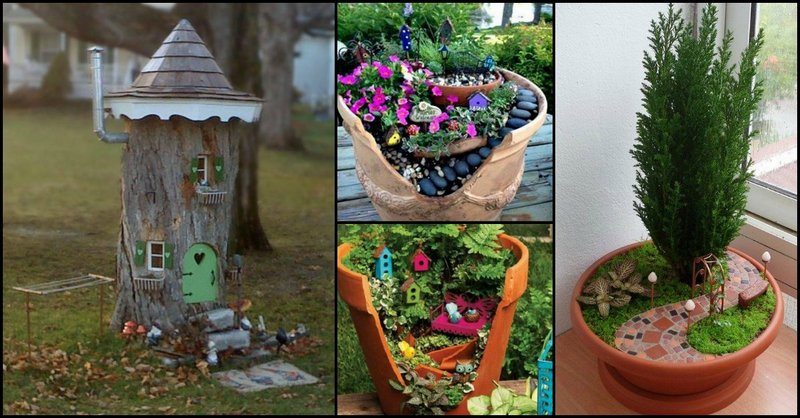
Fairy gardens are a great way to get your imagination going and get little kids interested in gardening.
But it’s not only a fun gardening activity for the whole family. It’s also a creative idea for putting broken or old items around the home to good use rather than throwing them straight into the trash bin. Let your imagination run and see if your broken terracotta pots can still be used to hold a fairy garden!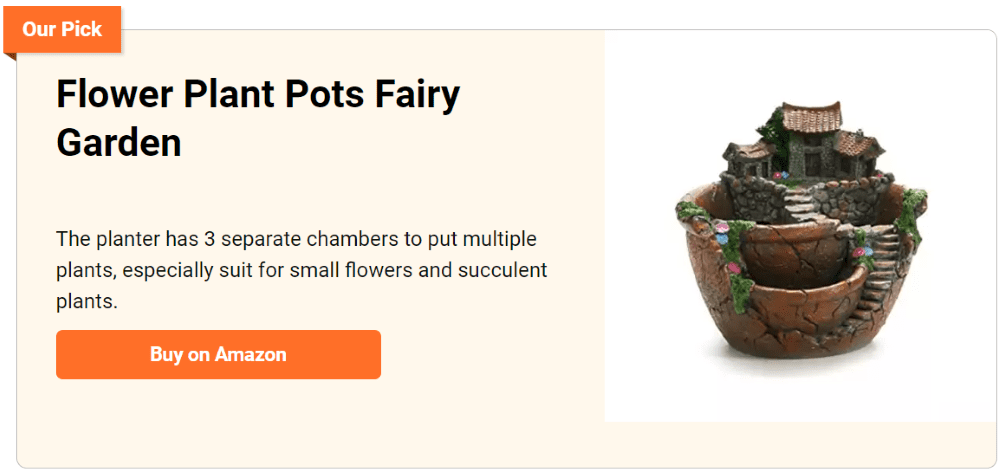
Displaying fairy gardens in the garden landscape can be both practical and fun. A fairy garden is a miniature garden that is intended for placing inside a house or a larger garden.
Fairy gardens can be practical since they can be placed in areas that may be difficult to maintain or areas that receive limited sunlight, as long as you do not need to water the plants. It can also be fun to look at because you can use your imagination to create your own miniature world.
Also, don’t buy decorating materials just yet! Small, broken tiles and other scrap materials from a construction or renovation project in your home can be used to create the pathways or mini houses in your fairy garden.
Your grown-up kids might also have small toys you can use to add more life to your creation, like mini people and furniture.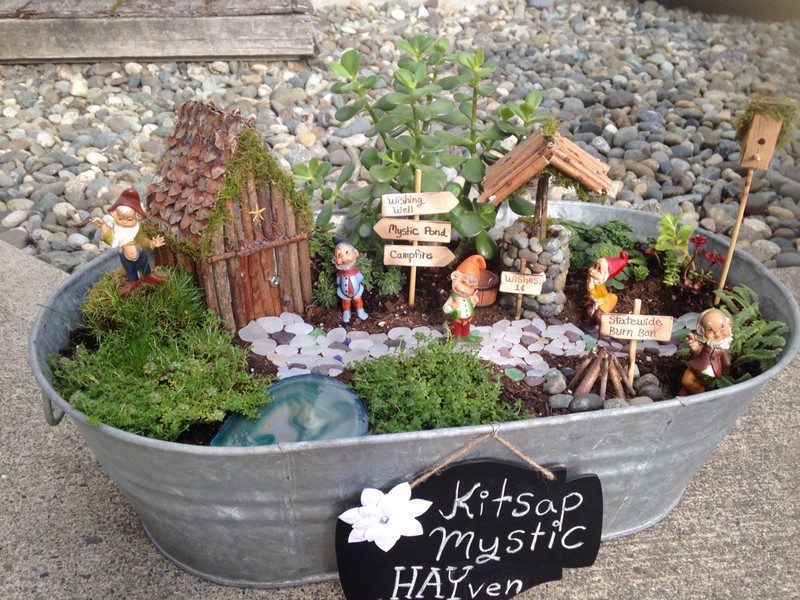
A walk in your local area is also sure to bring you some interesting rocks, sticks, or tiny plants to add to your masterpiece.
If you want to create your own fairy garden and want to add some special touches to it, you can always go around your neighborhood and pick up some special rocks, leaves, sticks, or small plants to add to your garden.
Making a Fairy Garden
1. Place container in moist, well-drained soil
- Placement is the most important aspect of creating the perfect fairy garden. A small pot, like the ones in which succulents are grown, can be placed almost anywhere because of its small size.
- However, you must prefer wider pots that are at least one foot wide and one and a half tall. The taller the pot, the more room there is for more accessories you can put around and play with.
2. Fill container with potting soil
- Use potting soil, not soil or garden soil. If you use soil or garden soil, you’ll have no drainage, which means the roots of your plants will stay wet and soggy.
- This leads to root rot, which kills plants. If you use potting soil, the excess water will drain away, keeping the roots of your plants healthy.
3. Add plants
- Fairy garden plants come in so many varieties. The key is to find plants that grow well where you live. Succulent plants work well for fairy gardens because they are drought tolerant.
A fairy garden is indeed a fun, creative, adorable, and inexpensive idea to add more greens at home.
What’s not to like?
Be inspired by more fairy garden ideas by scrolling down our list below!
Click on any image to start the lightbox display. Use your Esc key to close the lightbox. You can also view the images as a slideshow if you prefer 😎
Fairy Garden Ideas
Aquarium or Jars (see also How to Make Cute Terrariums)
Transform your old aquariums or glass jars into captivating fairy gardens. These clear containers make ideal homes for fairy settings due to their visibility from all sides, allowing you to admire the intricate details of your miniature world. Start by filling the bottom with layers of pebbles and charcoal for drainage, followed by a layer of potting soil.
Plant small succulents or mosses that thrive in confined spaces. Decorate with miniature furniture, tiny pathways, or even a small fairy house to complete the magical scene. This project is not only a great way to upcycle unused jars or aquariums but also serves as a delightful indoor garden that brings a touch of whimsy to your home decor.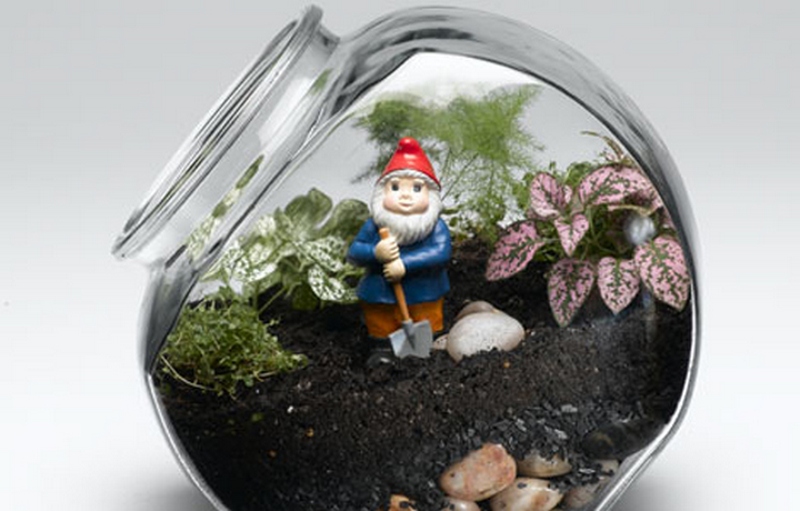
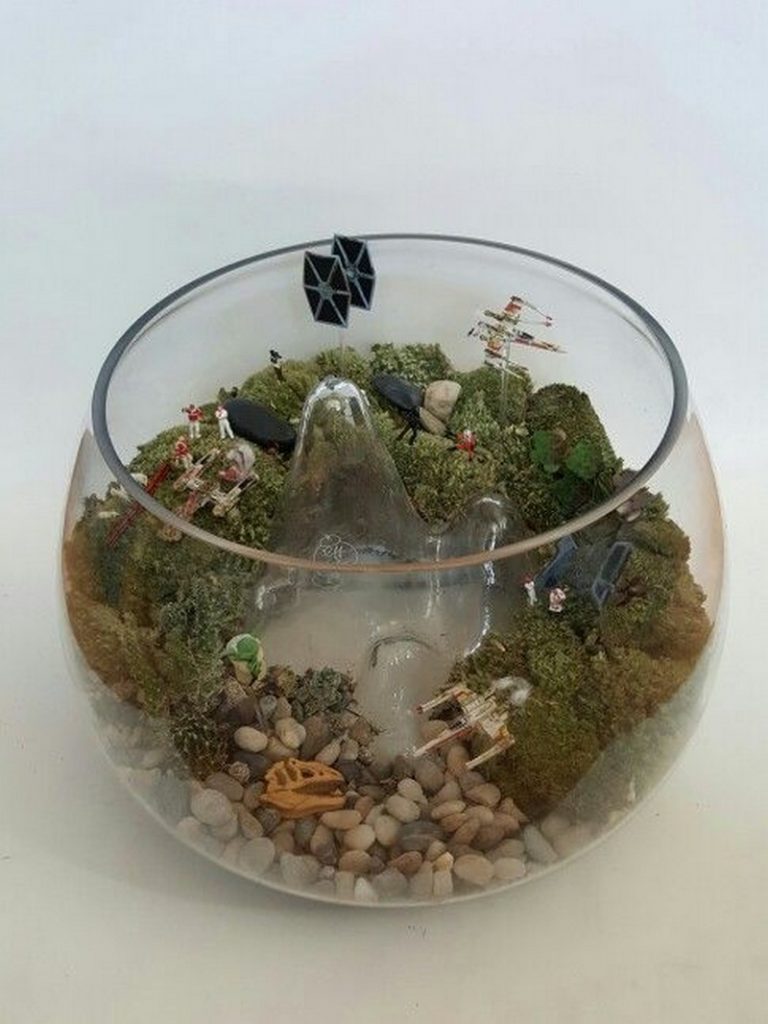

Tree Stump Gnome House
A tree stump in your garden can be transformed into an enchanting gnome house, turning what might be an eyesore into a charming focal point. Carve out a small door or windows directly into the stump to create a cozy home for your garden gnomes. You can add a roof made from bark, leaves, or even small stones to enhance the rustic look.
Surround the stump with low-growing plants and moss to integrate it naturally into the rest of your garden. This idea not only gives a new life to the old stump but also adds a storybook element to your outdoor space, making it a conversation starter among guests.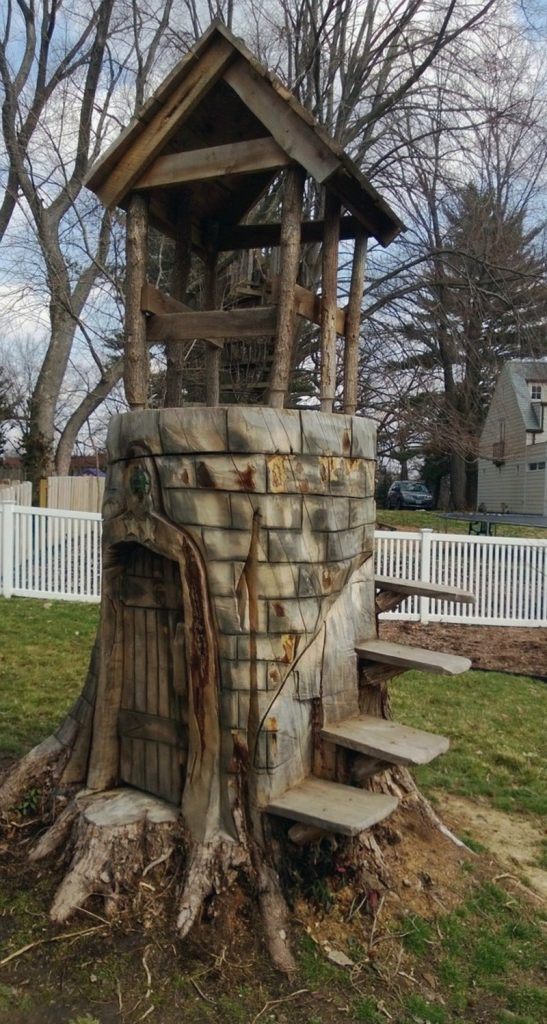
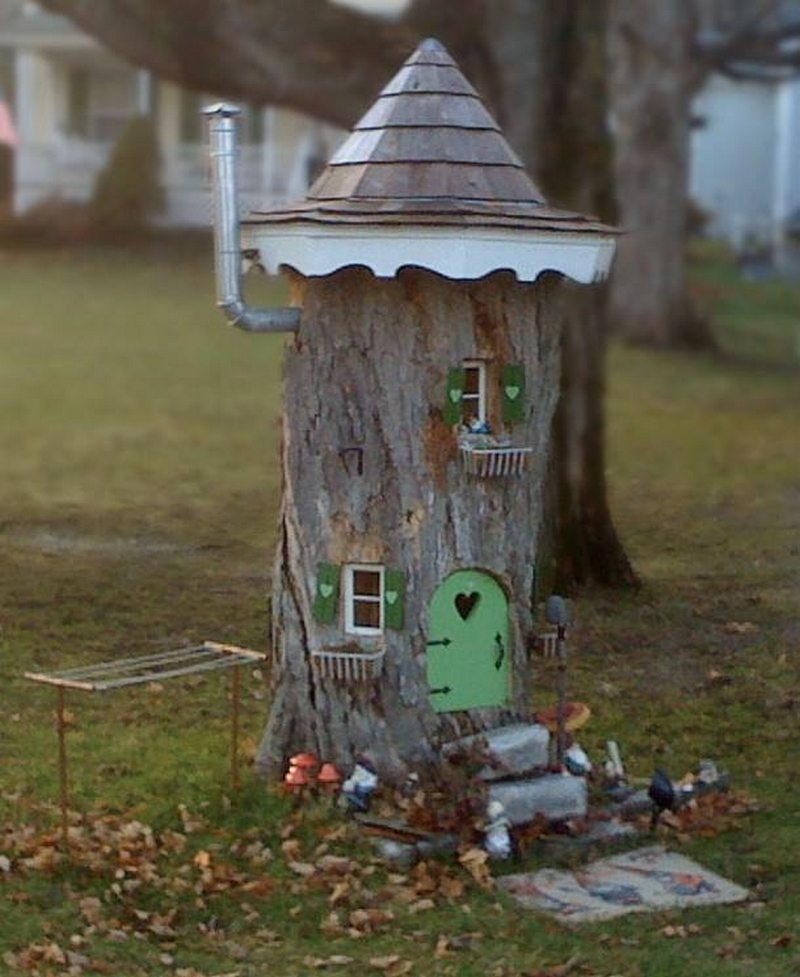
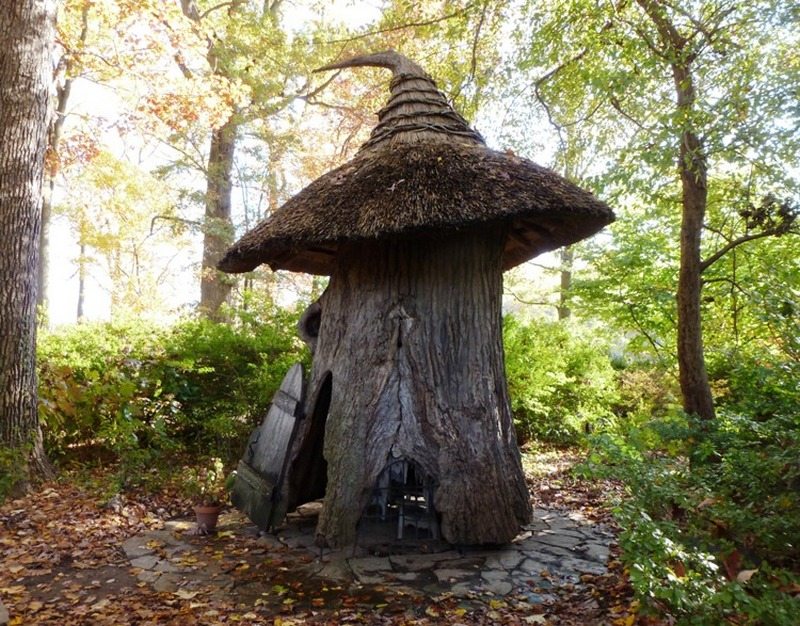
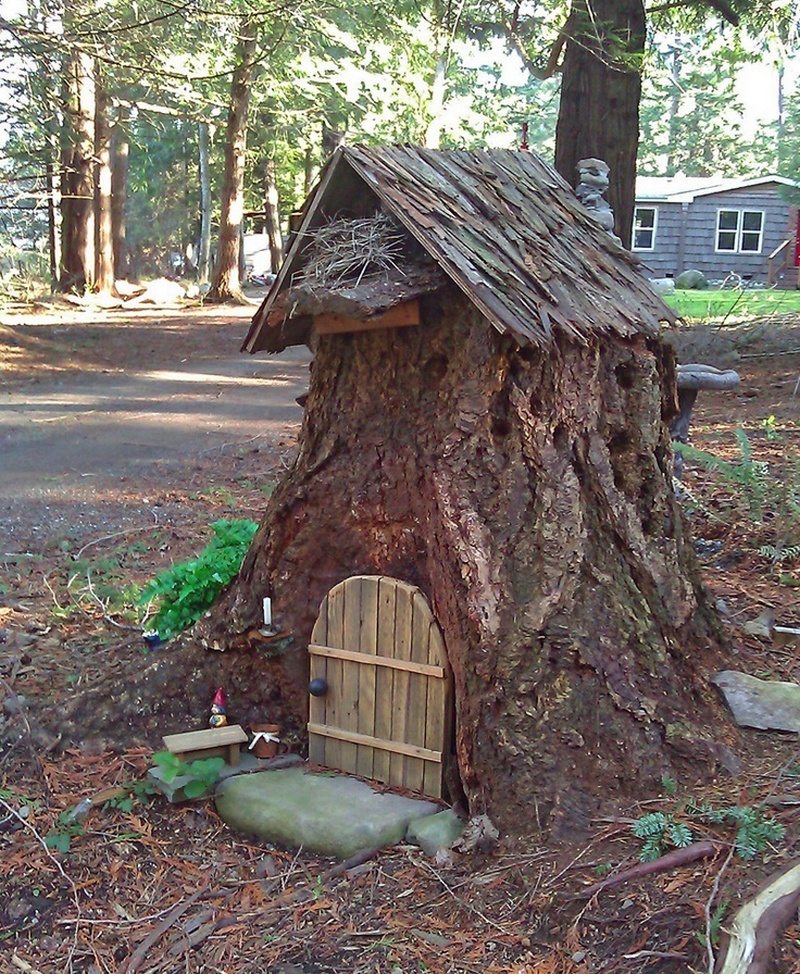
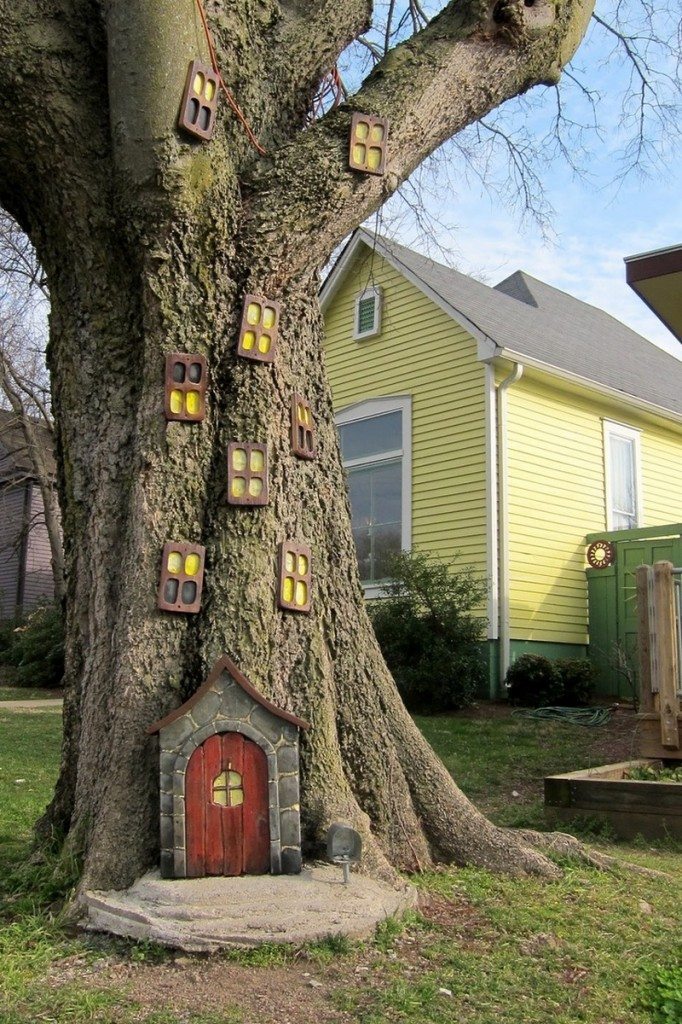
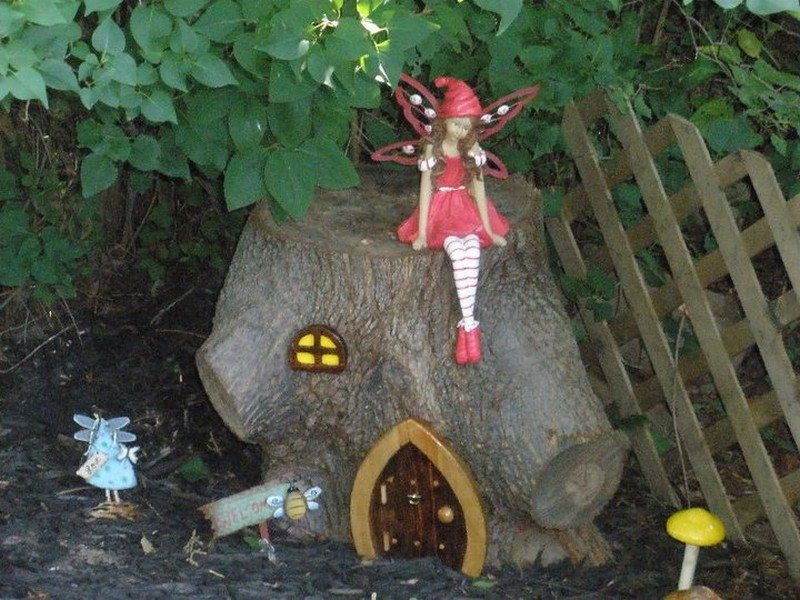
Wheelbarrow
Repurpose an old wheelbarrow to create a mobile fairy garden that you can move to catch the sun or shade as needed. This portable garden option is perfect for those who might want to change the location of their fairy garden with the seasons or during events. To start, ensure your wheelbarrow is clean and drill a few drainage holes if necessary.
Fill it with potting soil and then plant a mix of herbs, flowers, and miniature shrubs. Add whimsical elements like tiny benches, a miniature clothesline, or small figurines to complete the fairy tale setting. The rustic charm of a wheelbarrow adds an old-fashioned touch while serving a practical and aesthetic function in your garden.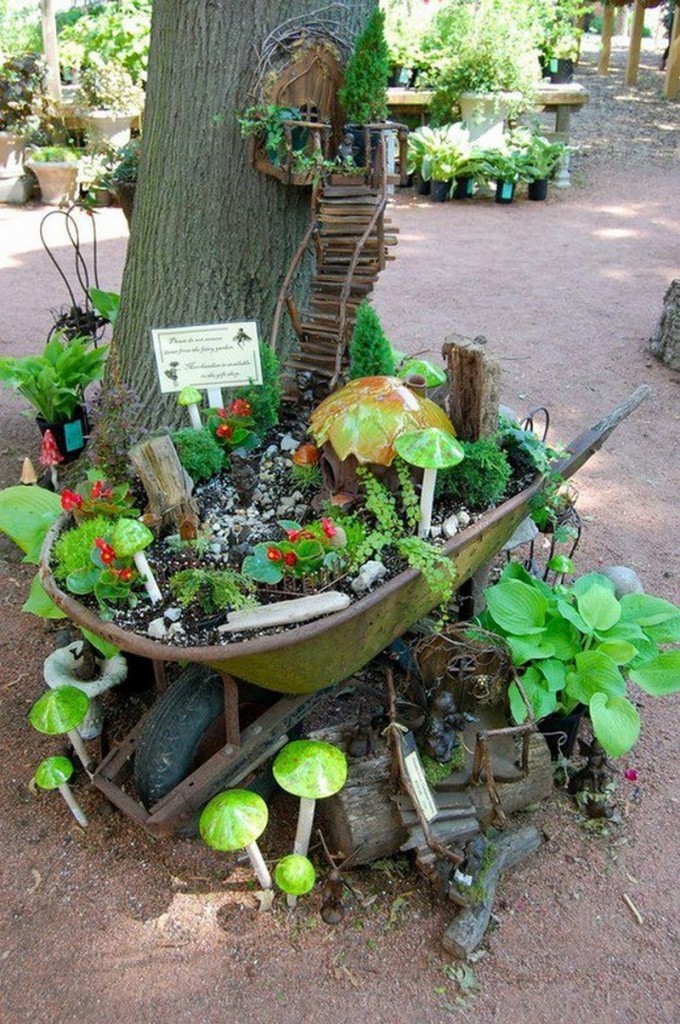
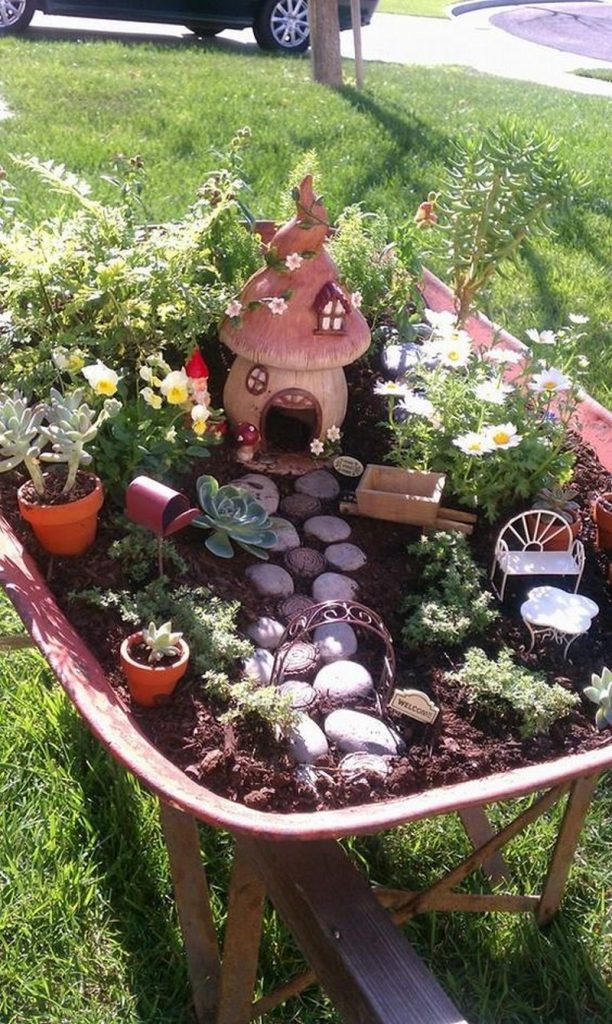
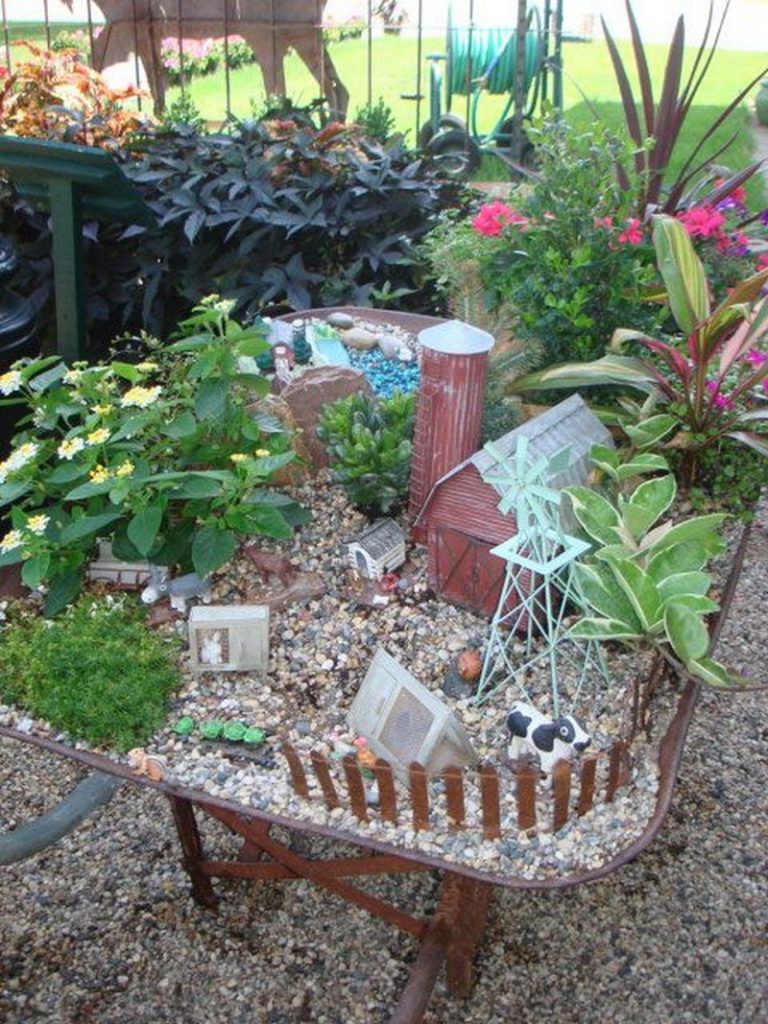
Timber Boxes
Timber boxes offer a sturdy and natural-looking base for constructing a fairy garden. These can be either purchased or handmade from scraps of wood. The natural wood complements the outdoor environment and provides a durable container for various plants and decorations.
Fill the box with rich soil, and then choose plants that are proportionate to the size of the box and will thrive in your local climate. Add layers of visual interest with pebbles, wooden walkways, and tiny houses made from bark or twigs. Timber boxes are especially suitable for creating themed fairy gardens, such as a woodland retreat or a rustic village, giving you the freedom to be creative with both the container and its contents.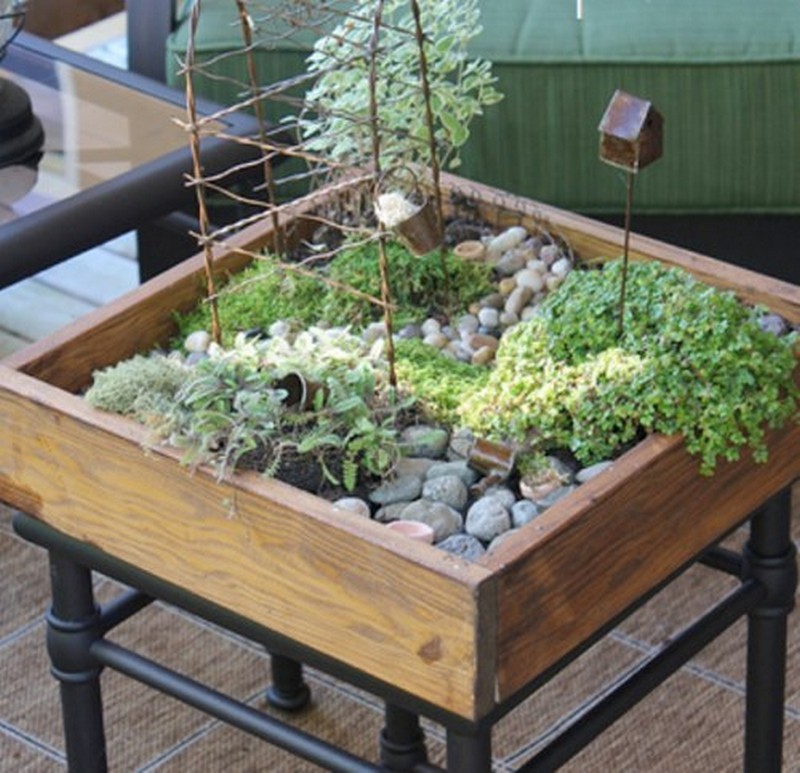
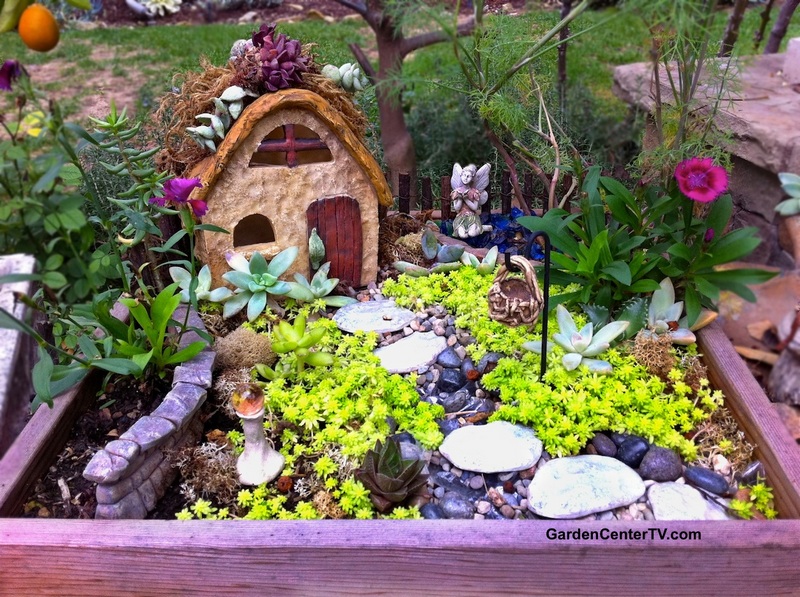
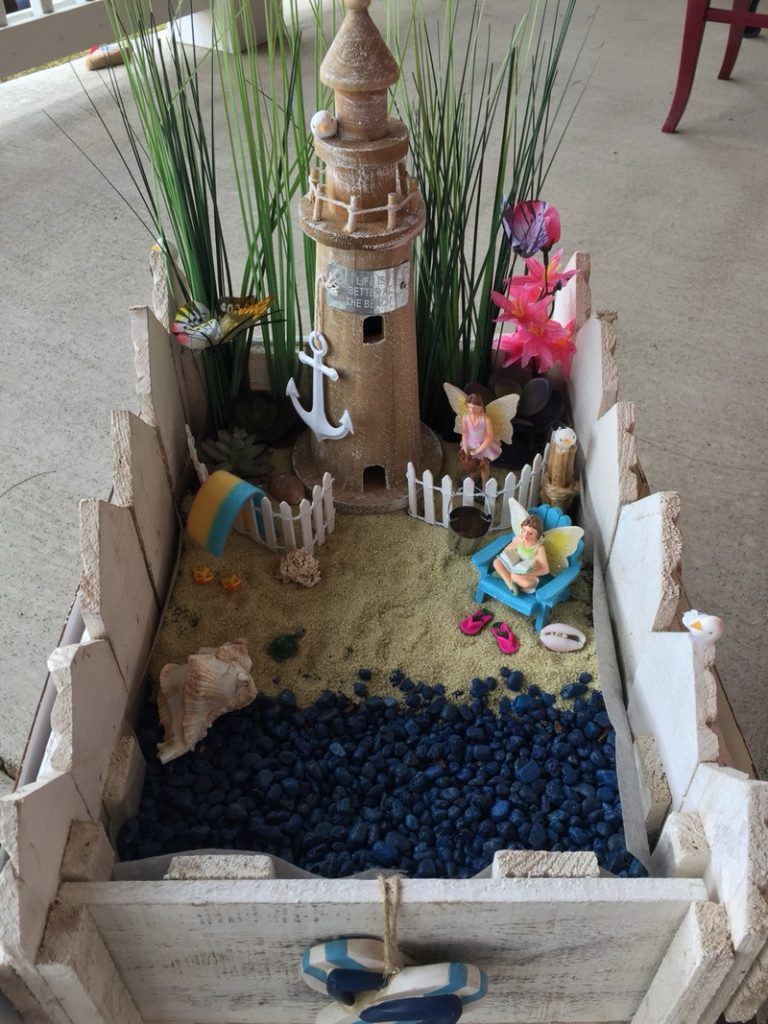
Wine Barrels
Wine barrels are a robust and aesthetically pleasing option for larger fairy gardens. Their round shape and wooden texture provide a rustic and vintage charm that enhances outdoor spaces. To create a fairy garden in a wine barrel, cut the barrel in half horizontally, and ensure proper drainage at the bottom. Fill it with a layer of gravel followed by potting soil.
Plant versatile flora such as small ferns, creeping thyme, or colorful flowers. Decorate with miniature accessories like arbors, tiny wheelbarrows, or small stone cottages to create a detailed and immersive scene. The spaciousness of a wine barrel allows for expansive and intricate fairy garden designs, making it a striking centerpiece for your garden or patio.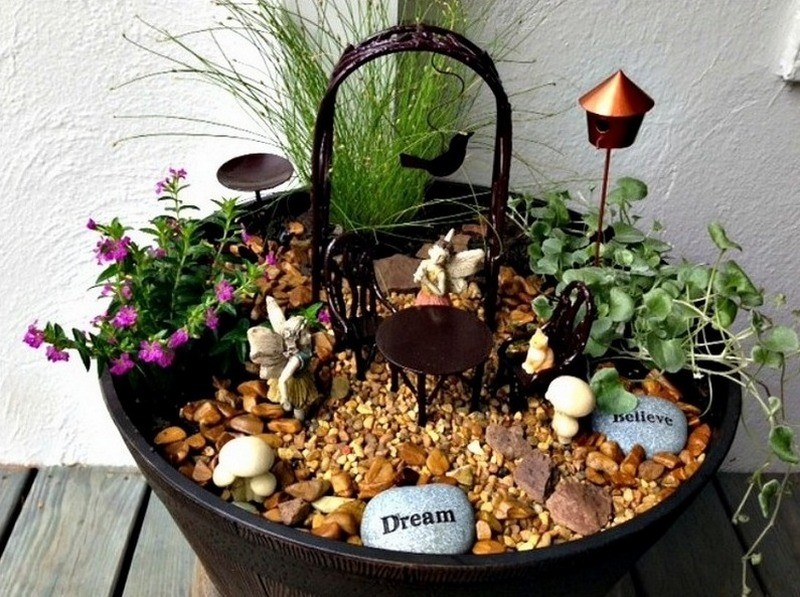
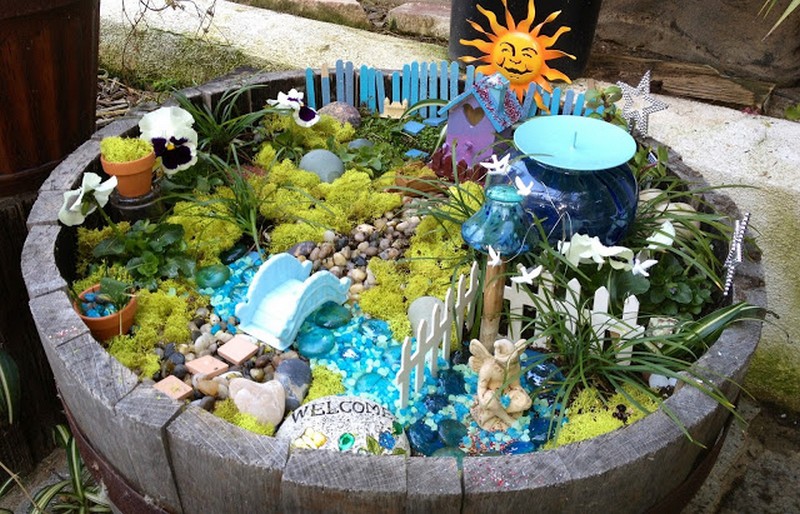
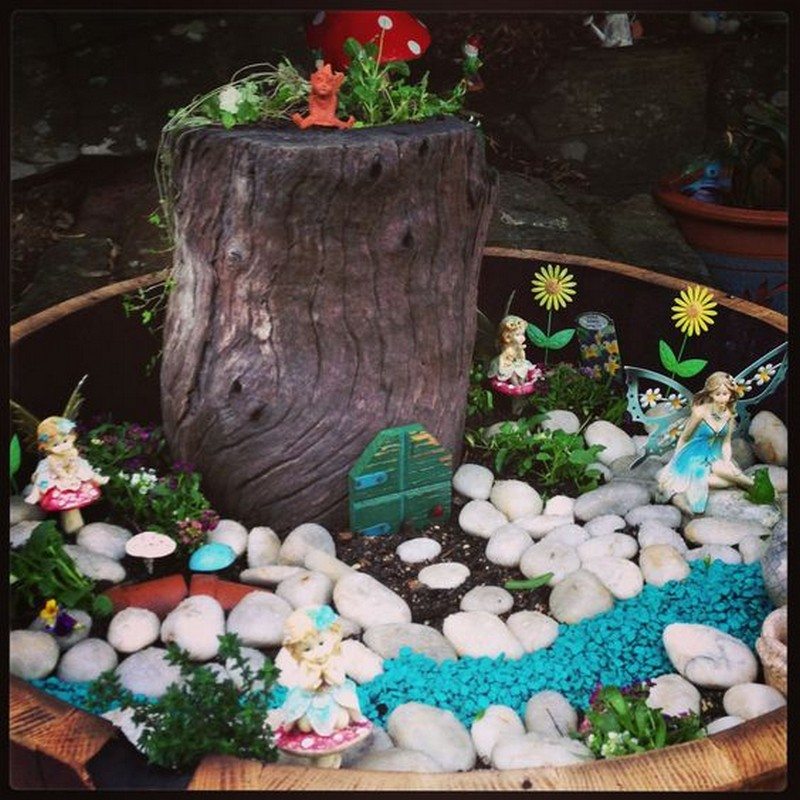
Bath Tubs
An old bathtub can be repurposed into a unique and spacious container for a fairy garden, combining whimsy with a touch of vintage style. The depth of a bathtub allows for extensive landscaping options and ample room for larger fairy structures and multiple plant species. To start, ensure the tub has adequate drainage holes to prevent waterlogging.
Fill with nutrient-rich soil, and then plant a mix of height-varied plants like dwarf trees, moss, and ground cover to create a layered look. Incorporate elements like bridges, ponds made from shallow dishes, and figures engaging in various activities to bring your fairy garden to life. A bathtub fairy garden can become a magical and engaging feature in any outdoor area, providing a large canvas for your creativity.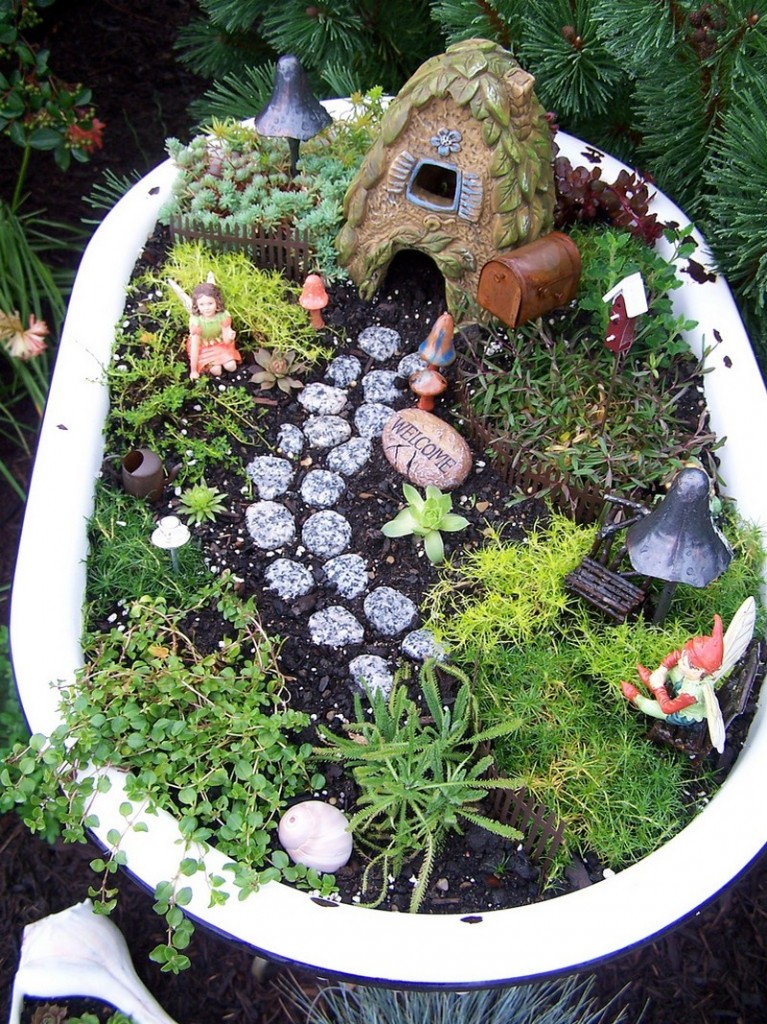
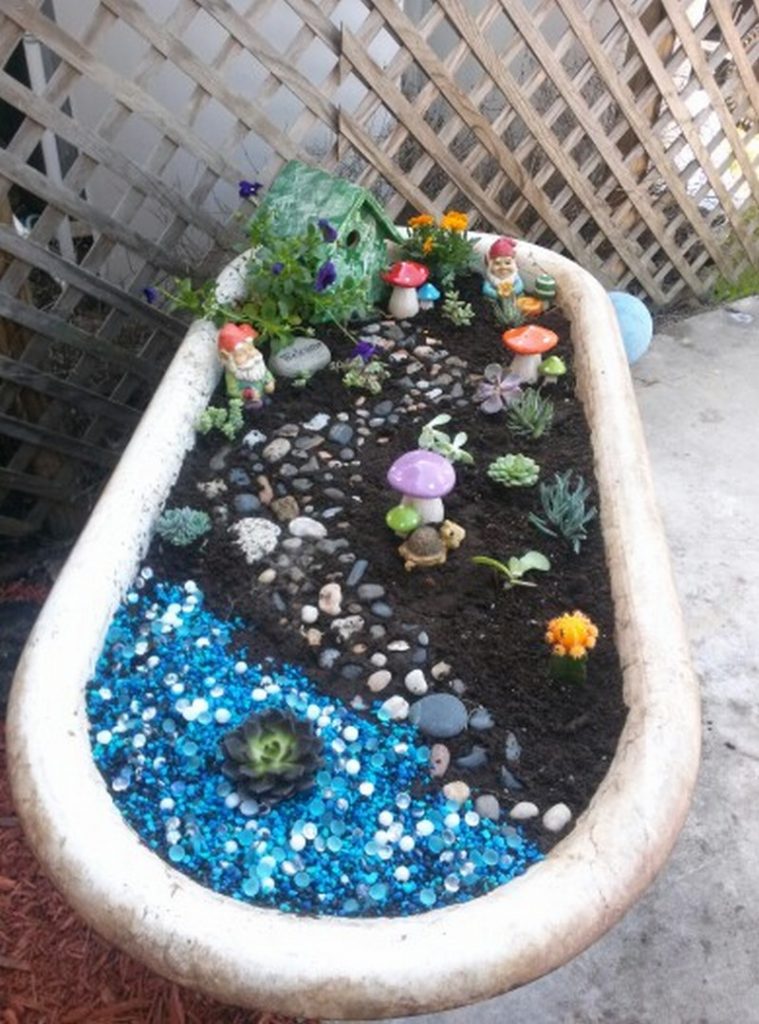
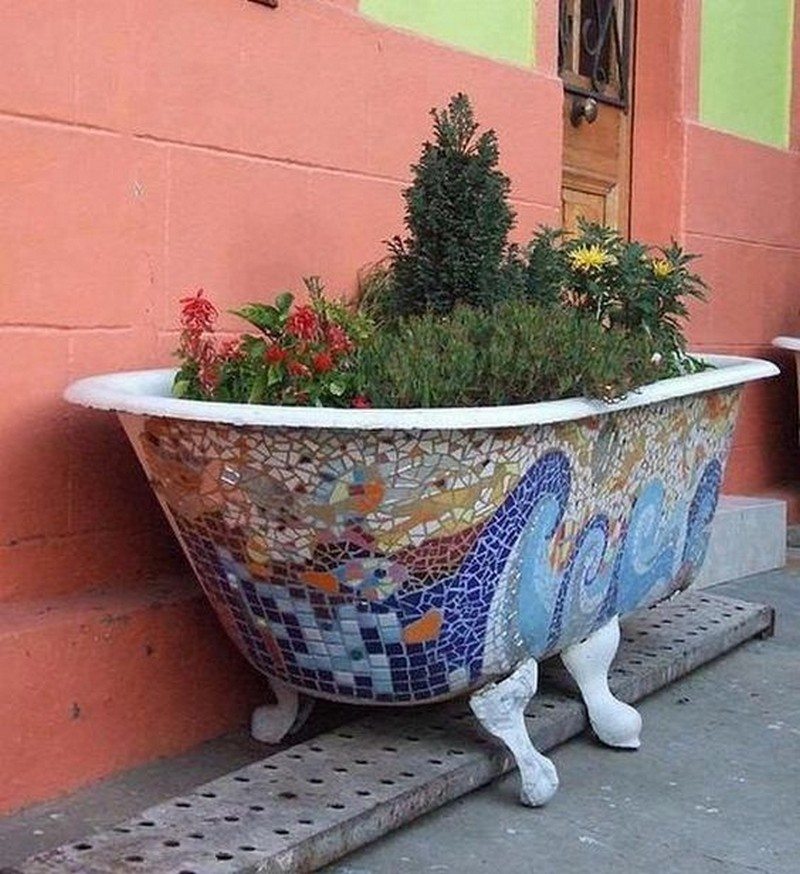
Galvanized Buckets
Galvanized buckets are versatile containers that lend a charming, rustic feel to any outdoor or indoor setting. These metal buckets are particularly useful for creating small-scale gardens or displaying a variety of plants. Their durability and resistance to rust make them ideal for long-term use.
You can drill a few holes in the bottom for drainage, fill them with a lightweight potting mix, and plant a combination of herbs, succulents, or colorful annuals. To add a whimsical touch, arrange small figures or decorative stones around the plants.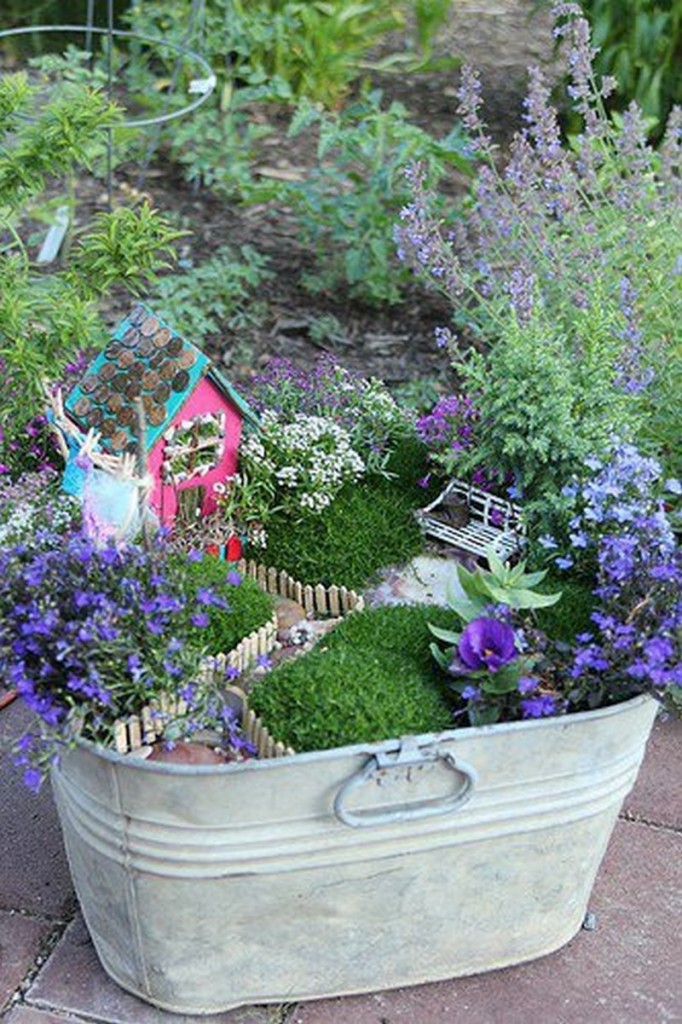
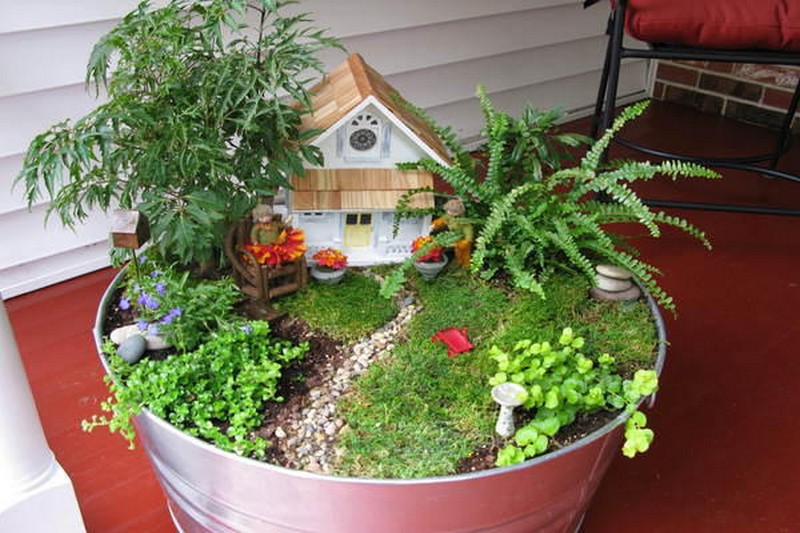

Terra Cotta Lids
Terra cotta lids can be creatively used as bases for small thematic displays or as unique plant saucers. Their natural earthy tone complements greenery beautifully, enhancing the aesthetic of any space. For a simple yet effective display, you can use these lids to hold a cluster of small potted plants or moss.
Additionally, arranging these lids at various heights can create an appealing multi-level display, perfect for showcasing smaller decorative items or using as a base for candle arrangements during outdoor gatherings.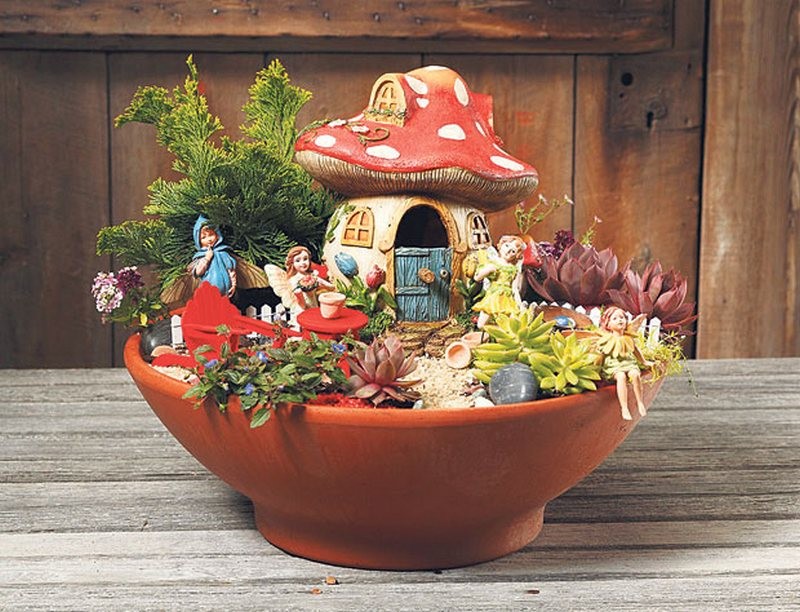
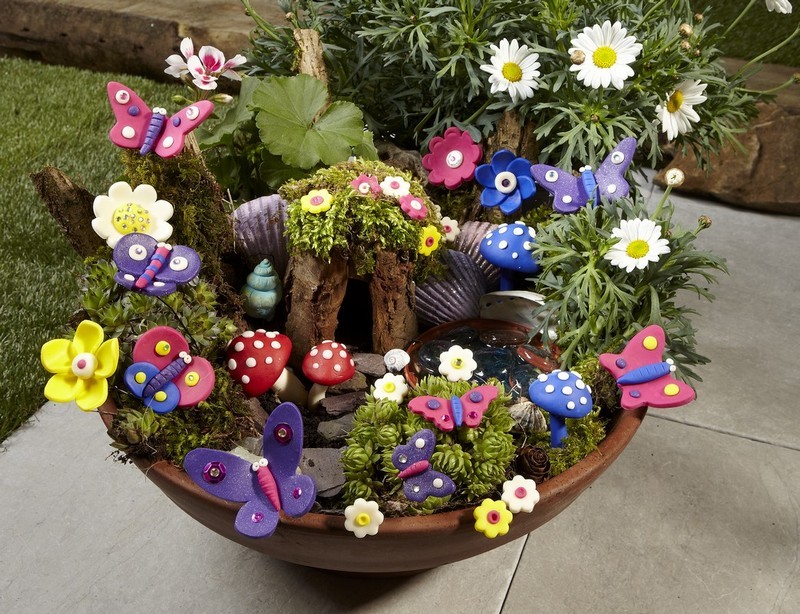
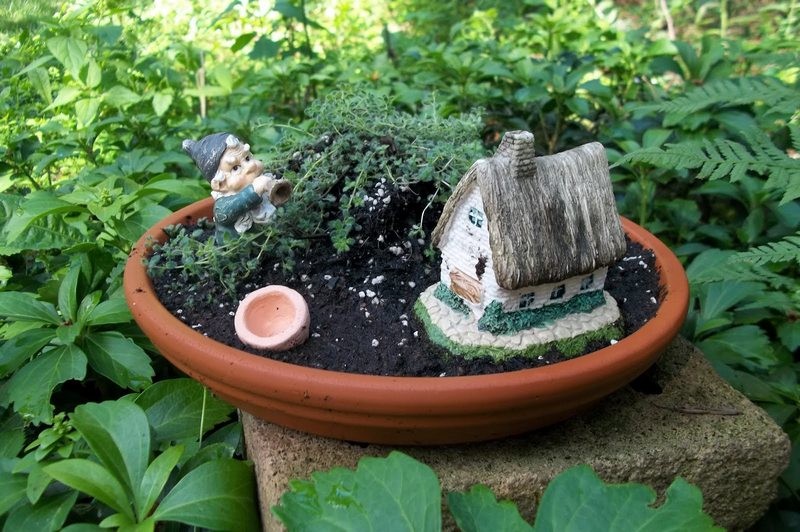
Broken Pots
Transforming broken terra cotta pots into decorative elements is an inventive way to repurpose materials that might otherwise be discarded. These fragments can be arranged to create a cascading effect, simulating a miniature landscape.
Stack the broken pieces in a way that they appear to spill out soil and small plants, creating a dynamic and visually appealing arrangement. This setup is especially effective for displaying plants that thrive in similar conditions, such as various succulents or small flowering perennials, which can be planted directly into the soil held by the pot shards. The rustic, fragmented look of the pots adds a unique character to any garden or patio space, turning what could be waste into an attractive feature.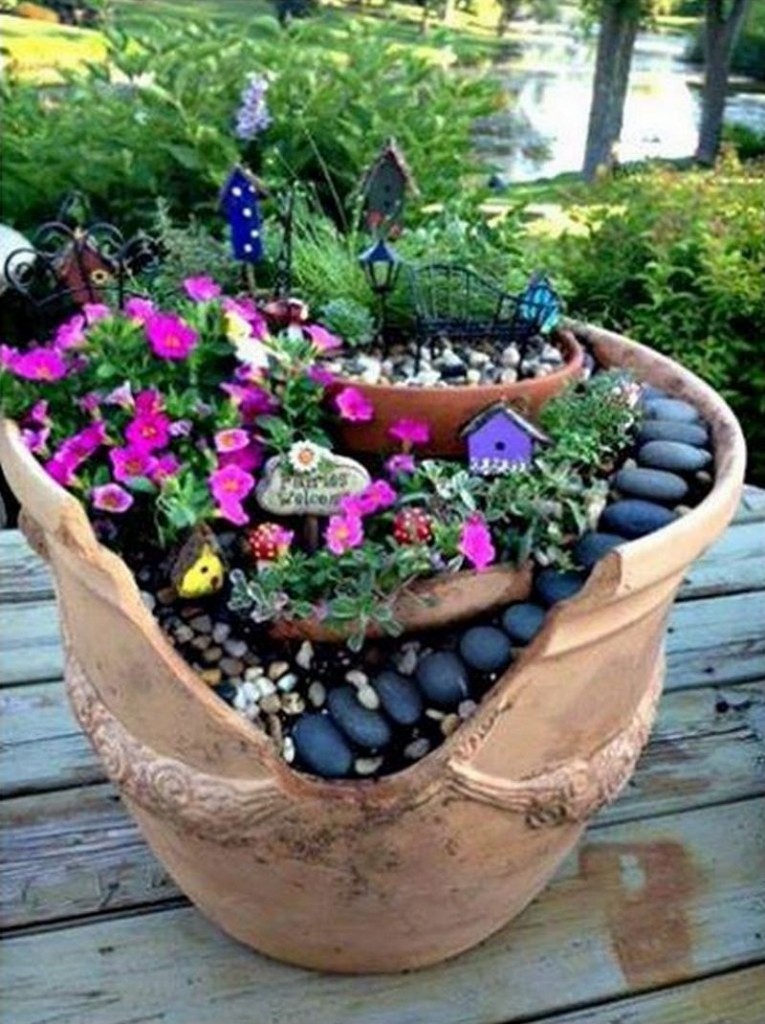
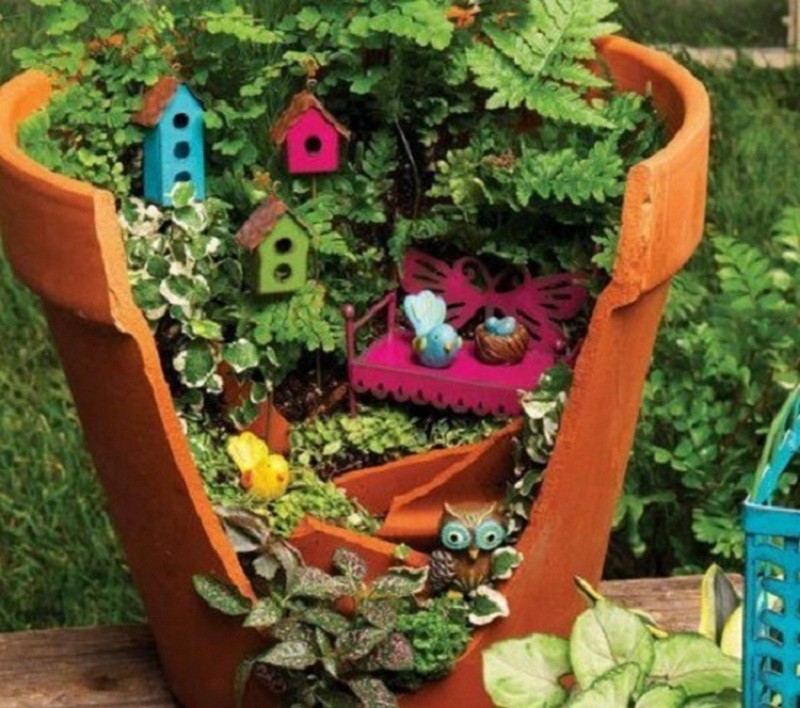
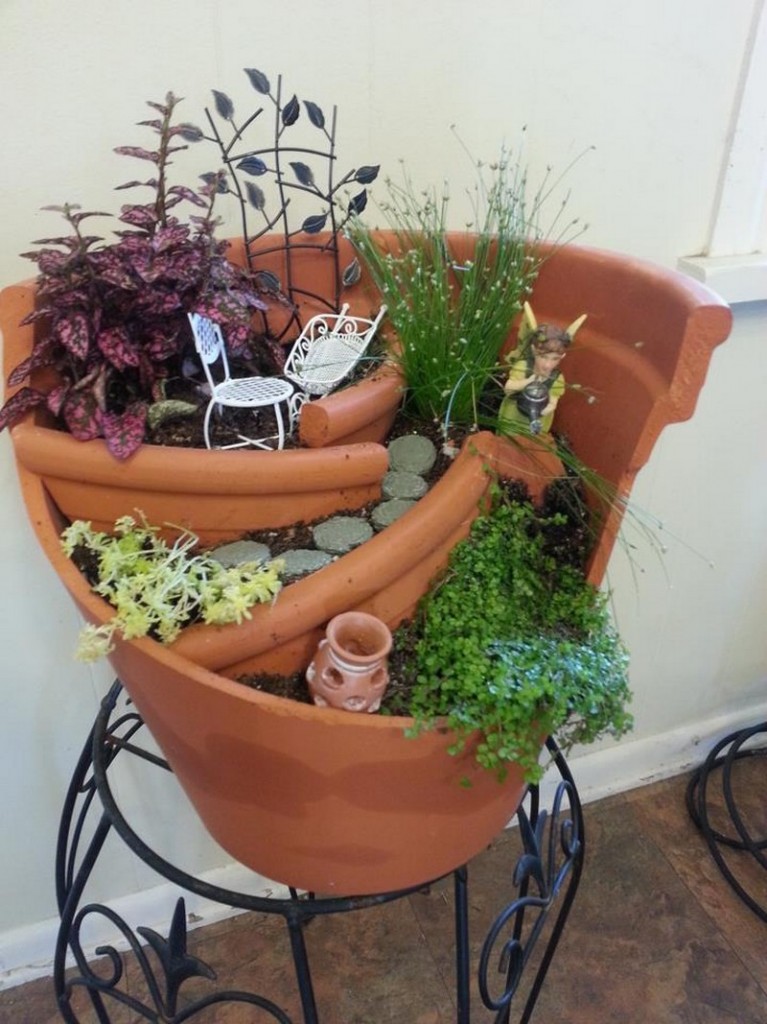
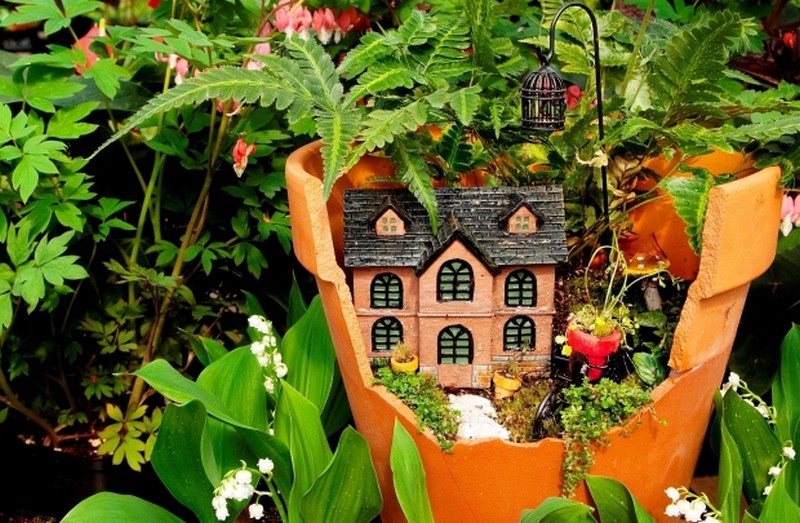
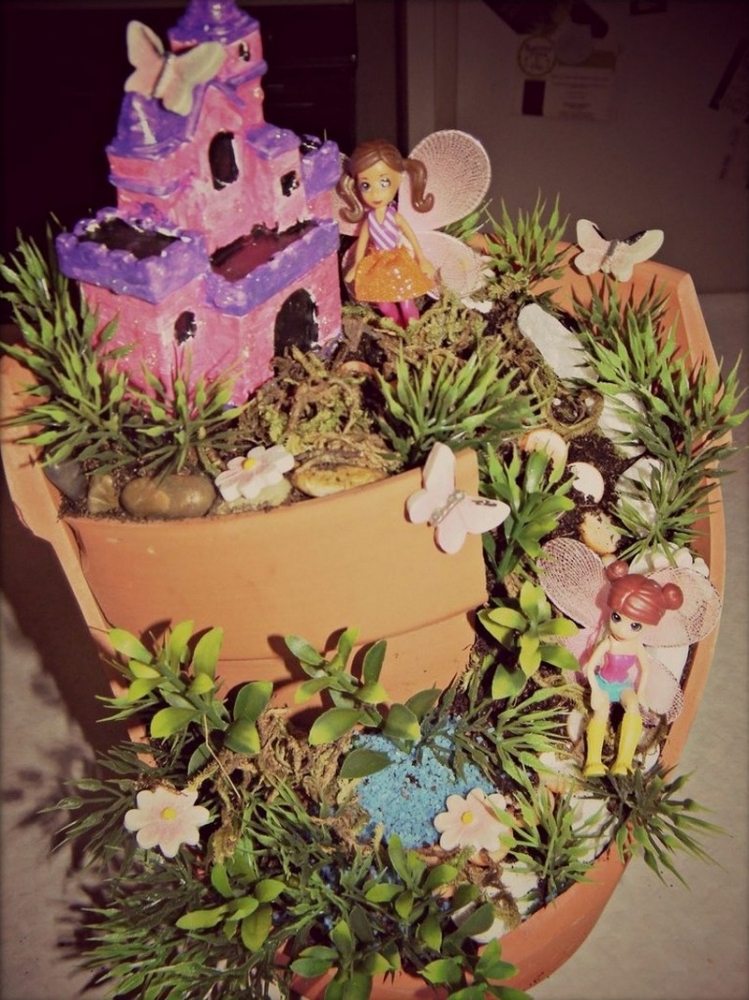
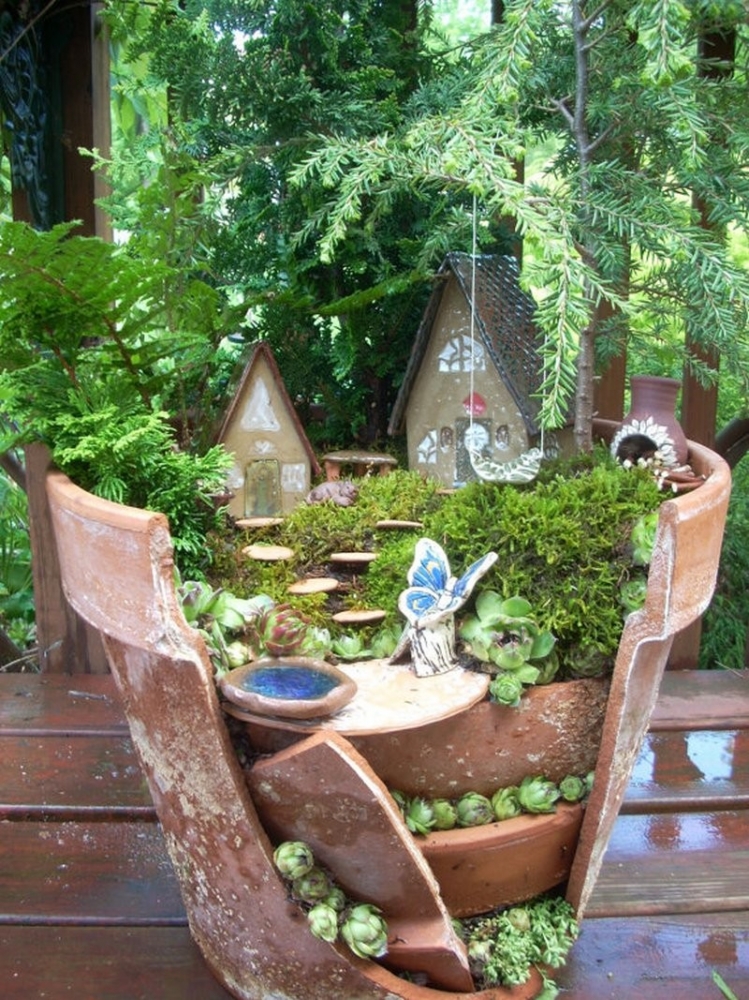
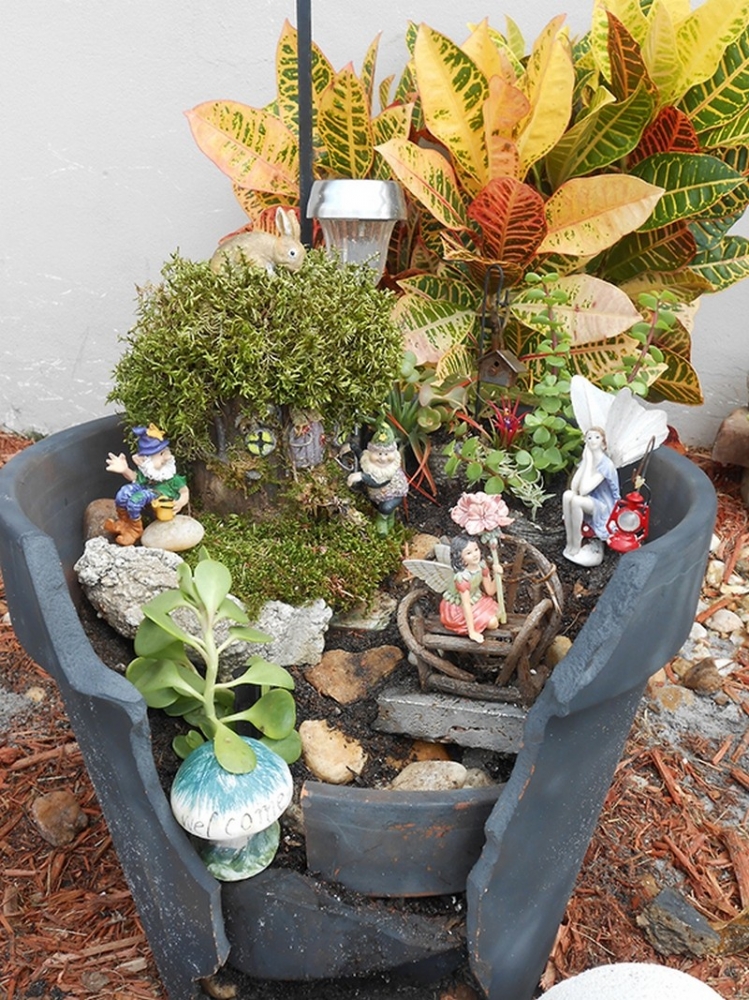
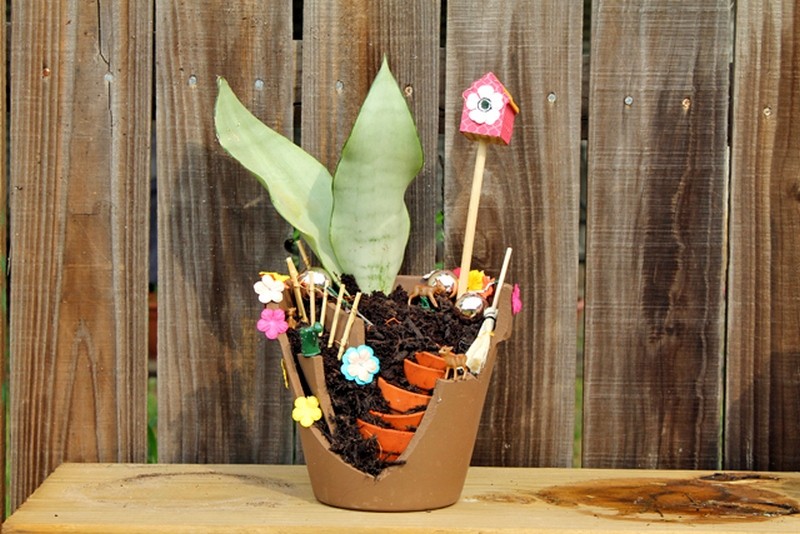
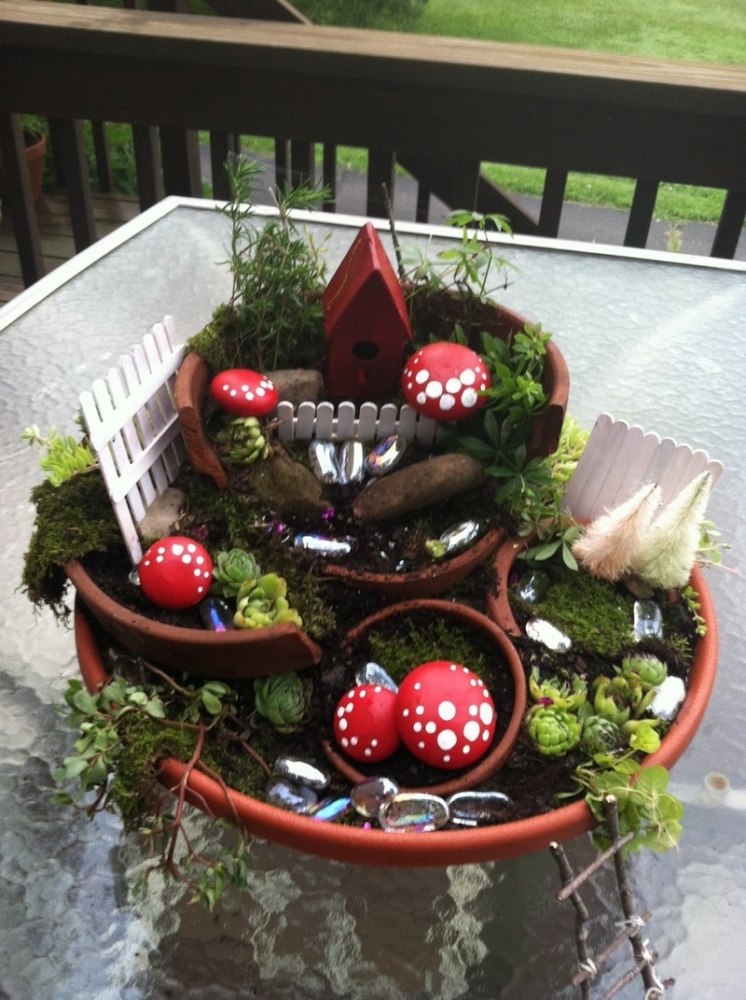
How to Create a Fairy Garden That Complements Your Home Decor
Creating a fairy garden that harmonizes with your home decor is a delightful project that combines creativity and charm. Here’s how you can craft a whimsical miniature wonderland indoors:
Choose the Right Container
- Teacups: Delicate and quaint, teacups make excellent containers for tiny fairy gardens. Their vintage appeal can add a touch of elegance.
- Old Clocks: Get innovative by repurposing an unused clock. Its hollow can offer a unique backdrop for your enchanting scene.
Selecting Decor Elements
- Miniature Figurines: Pick tiny fairies, animals, or mythical figures that resonate with your decor theme, enhancing the magical essence.
- Natural Elements: Use small stones, pebbles, and moss to mimic natural landscapes. These components blend seamlessly with various styles, from rustic to modern.
Incorporate Your Style
- Color Coordination: Match the colors of your fairy garden to the palette of the room. Soft pastels or earth tones can integrate comfortably into many settings.
- Decorative Accents: Add miniature furniture, arches, or pathways that reflect the architectural style of your home.
Placement Tips
Position your fairy garden where it complements existing decor. Consider placing it:
- On a window sill for natural light and a touch of the outdoors.
- Among bookshelves or mantlepieces to create a hidden, story-like feel.
Through these thoughtful selections and placements, you can create a fairy garden that not only adds magic to your home but also complements your unique decor.
Indoor vs Outdoor Fairy Gardens
When deciding between an indoor or outdoor fairy garden, consider the following factors to determine which is best suited for your needs:
Indoor Fairy Gardens
Pros:
- Protection from Elements: Being indoors shields your fairy garden from unpredictable weather, pests, and extreme temperature changes.
- Year-Round Enjoyment: You can display and enjoy your creation all year long, without concern for seasonal shifts.
- Space and Accessibility: Indoor gardens, placed on tables or shelves, are excellent for small spaces and can be admired up close.
Considerations:
- Size and Scale: Opt for small containers like teacups or decorative boxes. These limit plant and decoration size but provide a quaint, manageable display.
- Fragility: Use delicate materials and plants that thrive in a stable indoor environment.
Outdoor Fairy Gardens
Pros:
- Spacious Creativity: With larger containers like whiskey barrel planters or vintage wagons, you can craft expansive and elaborate designs.
- Natural Setting: The garden environment complements natural elements, enhancing the fairy tale appeal of your garden.
Considerations:
- Durability Requirements: Sturdy materials are a must to withstand outdoor conditions.
- Maintenance and Costs: Outdoor gardens typically require more plants and materials, thus increasing maintenance efforts and potential costs.
Select an indoor or outdoor fairy garden based on your available space, desired size, and willingness to handle varying maintenance needs. Indoor gardens offer a cozy display for delicate designs, while outdoor settings allow for grand, nature-infused themes. Consider both your aesthetic goals and practical constraints to craft the perfect fairy sanctuary.
Conclusion
Fairy gardens are a delightful way to combine creativity and gardening, offering a unique opportunity to upcycle old items and create enchanting spaces. Whether crafted indoors in teacups or outdoors in larger containers, these miniature gardens allow for endless customization and personal expression. Use the ideas and tips shared here to transform your space into a magical retreat, sparking joy for both you and your family.
FAQ: Fairy Garden Ideas
- Are there any specific techniques to consider when starting?
- While specific techniques aren’t outlined, the emphasis is on taking your time and allowing the placement to evolve naturally, suggesting a more intuitive approach to design.
- What is the goal of arranging a fairy garden?
- The primary goal is to have fun and express your creativity. The process should be enjoyable, providing an opportunity for personal expression and imaginative play.
- How flexible should I be with my initial garden design?
- Be very flexible with your initial design. Allow yourself to adapt and incorporate new elements as they come to mind, ensuring the process remains enjoyable and spontaneous.
- What should my mindset be while creating a fairy garden?
- Adopt a mindset of fun and exploration. Embrace the opportunity to try new ideas and themes, focusing on enjoying the creative journey rather than just the end result.
- How can I enhance the creative process of arranging my fairy garden?
- To enhance your creative process, take your time with the arrangement and allow your imagination to guide you. Experiment with different placements and be open to inspiration that may arise as you work.
- How should I go about the actual creation of the garden?
- Begin arranging your plants and decorative items according to your plan. Embrace creativity and adjust as you go, new ideas can emerge during the process, making your garden unique and personal.
- What type of plants should I use?
- Decide between using regular-sized plants, ideal for larger containers, or opting for miniature plants that suit smaller displays. Check with local nurseries for available mini plants tailored for fairy gardens.
- How do I plan my fairy garden before starting?
- Sketch out your ideas to identify what materials and decorations you’ll need. This planning stage helps you see what you already have and what you might need to purchase, ensuring a more organized approach.
- What theme or style should I consider for my fairy garden?
- Choose a theme that resonates with you, whether inspired by a beloved book or movie or a classic garden style like a cottage or English garden. This theme will guide your selection of decorative elements and plants.
- How do I choose the location and size of my fairy garden?
- Decide whether you want your fairy garden indoors or outdoors. Consider the available space, which can range from a compact teacup to a sprawling fairy village. Keep in mind the weather, as some materials may not withstand direct sunlight or rain.
If you liked these, you will also like viewing these easy DIY projects…






